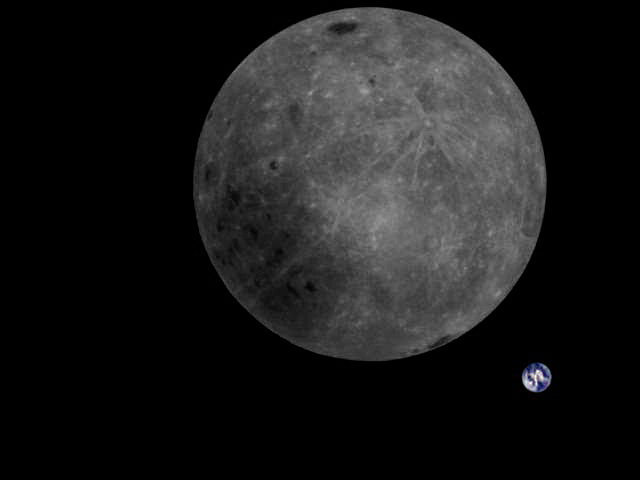
A Tiny Chinese Lunar Orbiter Just Crashed on the Moon's Far Side (on Purpose)
Longjiang-2 outlived its planned one-year design life.

China's tiny lunar orbiter Longjiang-2, also known as DSLWP-B, crashed intentionally into the moon's far side on July 31, according to media reports.
The 104-lb. (47 kilograms) Longjiang-2 was sent into space on May 21, 2018, along with the Chang'e 4 lunar probe's relay satellite, and entered orbit around the moon four days later. (Longjiang-2's sister satellite, Longjiang-1, failed to reach lunar orbit.)
The small spacecraft operated in orbit for 437 Earth days, exceeding its one-year designed lifespan. It was then brought down in a controlled fashion at 10:20 a.m. EDT (1420 GMT; 10:20 p.m. Beijing time) on July 31, China's state-run Xinhua news agency reported, citing the China National Space Administration's Lunar Exploration and Space Program Center as a source.
"The micro satellite carried an ultra-long-wave detector, developed by the National Space Science Center of the Chinese Academy of Sciences, aiming to conduct radio astronomical observation and study solar radiation," Xinhua wrote.
"As a part of the international cooperation behind China's Chang'e 4 mission, Longjiang-2 also carried an optical camera developed by the King Abdulaziz City for Science and Technology of Saudi Arabia," the news agency added. "The camera has captured 30 high-definition images of the moon."
There is a new crater on the Moon... We are already 5 minutes past the moment DSLWP-B would've appeared from behind the Moon if it had not crashed. The fact that we are no longer receiving signals means it has impacted the lunar surface. RIP DSLWP-B. pic.twitter.com/aNHfZ9tvqcJuly 31, 2019
Rest in pieces
"There is a new crater on the Moon," Cees Bassa, a satellite observer and astronomer working at ASTRON, the Netherlands Institute for Radio Astronomy, tweeted on July 31.
"We are already 5 minutes past the moment DSLWP-B would have appeared from behind the Moon if it had not crashed. The fact that we are no longer receiving signals means it has impacted the lunar surface. RIP DSLWP-B," Bassa added in the same tweet.
Get the Space.com Newsletter
Breaking space news, the latest updates on rocket launches, skywatching events and more!
The collision with the moon was planned since January of this year and was done as a means to end the mission without leaving debris in lunar orbit, amateur radio expert Daniel Estévez wrote in a recent blog post.
Estévez explained in an earlier post that, on Jan. 24, the periapsis (low point) of the lunar orbit of DSLWP-B was lowered by approximately 310 miles (500 kilometers), so that orbital perturbations would eventually force the satellite to collide with the moon.
- Chang'e 4 in Pictures: China's Mission to the Moon's Far Side
- In Photos: China's Chang'e 4 Moon Rover Toys Celebrate Mission to Lunar Far Side
- Watch China Land on the Moon's Far Side in This Awesome Video!
Leonard David is author of the recently released book, "Moon Rush: The New Space Race" published by National Geographic in May 2019. A longtime writer for Space.com, David has been reporting on the space industry for more than five decades. Follow us on Twitter @Spacedotcom or Facebook.
Join our Space Forums to keep talking space on the latest missions, night sky and more! And if you have a news tip, correction or comment, let us know at: community@space.com.

Leonard David is an award-winning space journalist who has been reporting on space activities for more than 50 years. Currently writing as Space.com's Space Insider Columnist among his other projects, Leonard has authored numerous books on space exploration, Mars missions and more, with his latest being "Moon Rush: The New Space Race" published in 2019 by National Geographic. He also wrote "Mars: Our Future on the Red Planet" released in 2016 by National Geographic. Leonard has served as a correspondent for SpaceNews, Scientific American and Aerospace America for the AIAA. He has received many awards, including the first Ordway Award for Sustained Excellence in Spaceflight History in 2015 at the AAS Wernher von Braun Memorial Symposium. You can find out Leonard's latest project at his website and on Twitter.









